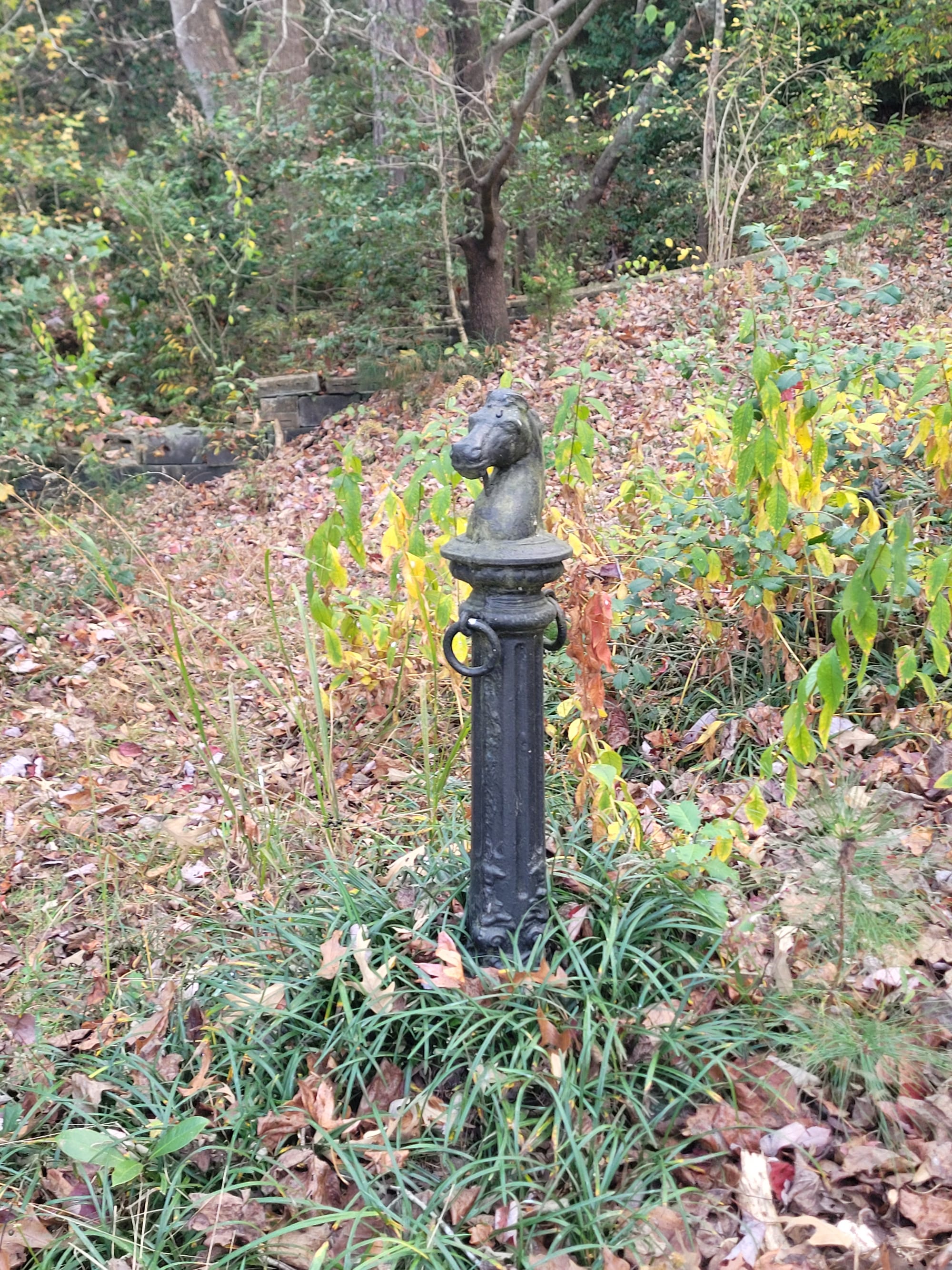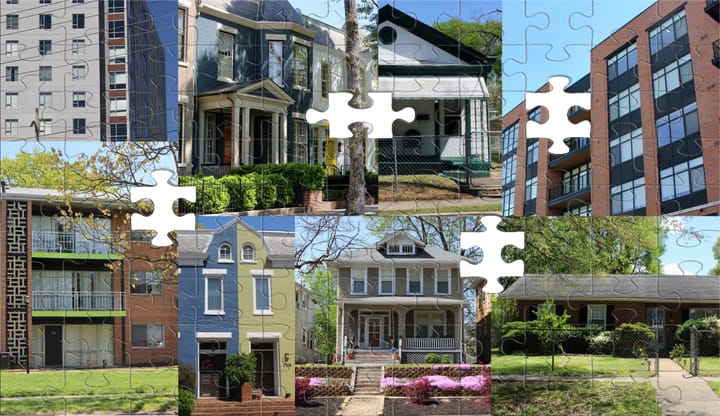A relic of Richmond’s vanished ‘most historic’ neighborhood can be found…on the Northern Neck?
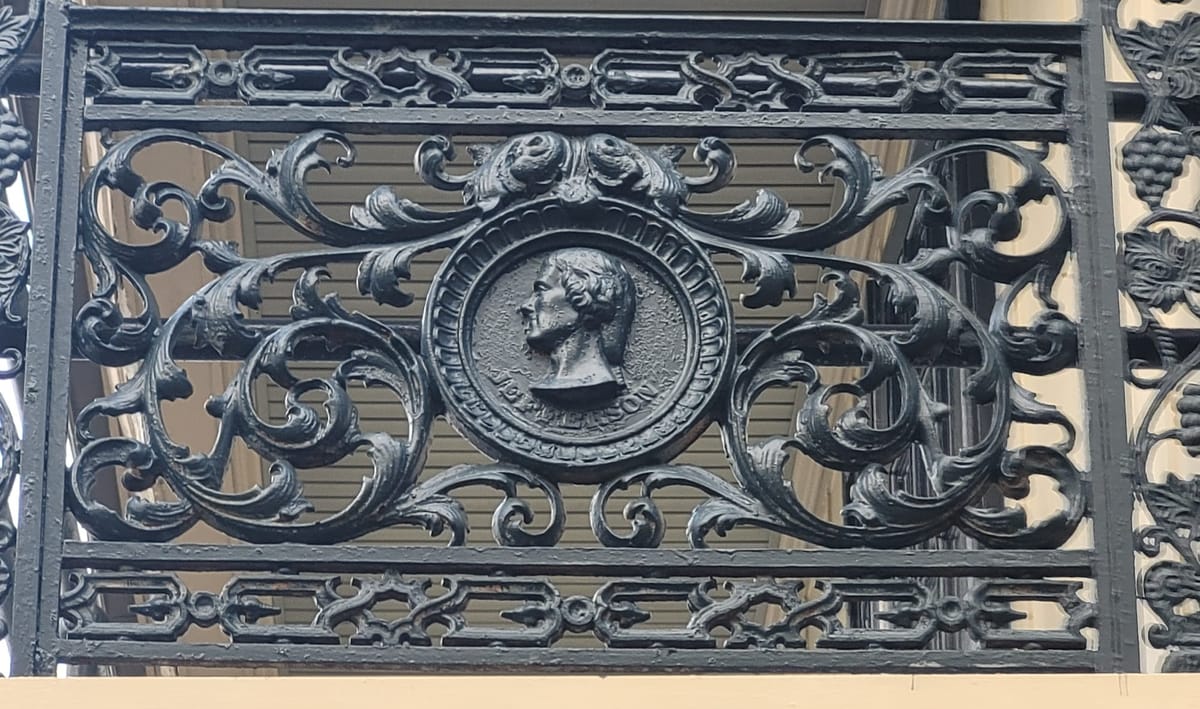
Richmond is young even by the standards of major American East Coast cities; Boston and New York are both fully a century older, while Philadelphia predates it by still half as much. Even nearby Hampton has about 120 years on us.
Still, as with most other urban centers, the city has been through momentous changes over its comparatively short lifetime, never more so than over the last century or so. And while much of the city has radically transformed over that period, there are still vestiges of the old landscape—some of them obvious, others less so.
Such is the latter case with Court End, maybe the most little-known neighborhood in the city proper. A large part of its anonymity is due to the fact that the neighborhood itself mostly does not exist anymore; a quarter that once spanned many dozens of houses in a near-perfect-square-mile parcel has been replaced almost entirely by the center of our city’s government and the sprawl of VCU Health. Only a single block of the old neighborhood remains.
It can be hard to picture a low-slung residential landscape in what has become a thriving city center. Yet Court End used to boast countless small homes, businesses and even some mansions of the city’s elite, comprising what Richmond historian Mary Wingfield Scott called “the most historic of [Richmond’s] many old neighborhoods.”
Where the Library of Virginia’s concrete facade now towers over Broad Street, there stood the Swan Tavern, what Scott described as “a typical eighteenth-century inn” and which included a scattering of outbuildings that occupied the entire block between Eighth and Ninth. Thomas Jefferson once lodged there, as did Edgar Allen Poe.
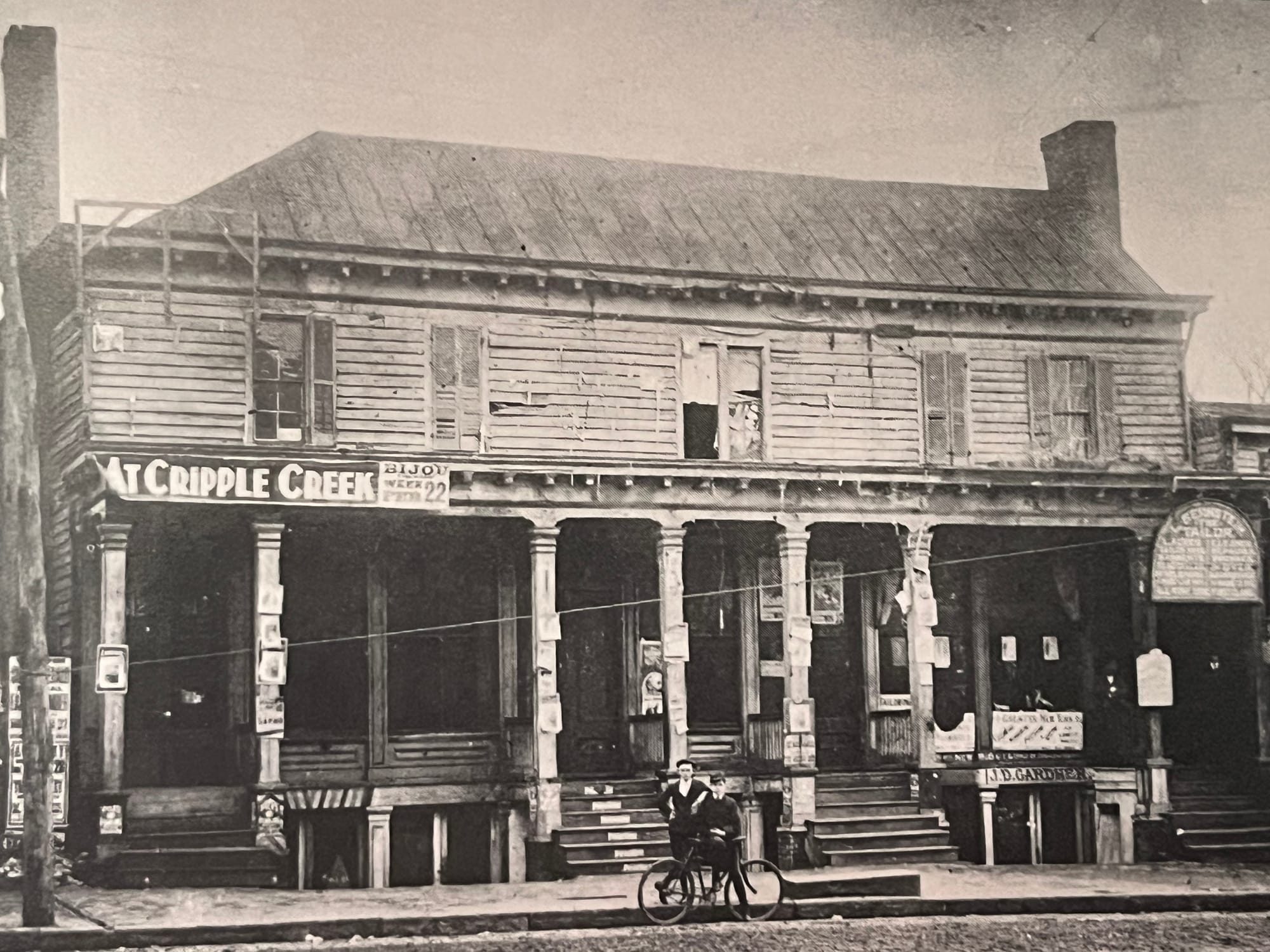
Around the corner, about where the Marshall Plaza Building now stands, the Jaquelin Ambler House sat on a corner lot; its namesake served as the state treasurer, and at one point it housed city Treasurer Samuel Greenhow. A block away, the “broad two-story mansion” of the Belvin House sat where the Federal Building now rises over Eighth Street.
Of similar note was the Italianate structure that held the Richmond Female Institute at Marshall and 10th. A forerunner of sorts to the University of Richmond, the institution was run “under Baptist auspices” from the 1850s. Apart from its historical value as an early women’s college, it reputedly bore the somewhat more dubious distinction of having flown the first Confederate flag in the city in early 1861, several weeks before Virginia officially seceded from the Union. (School president Charles Winston took the flag down, Scott wrote, but “the determined young ladies” promptly raised it again.)
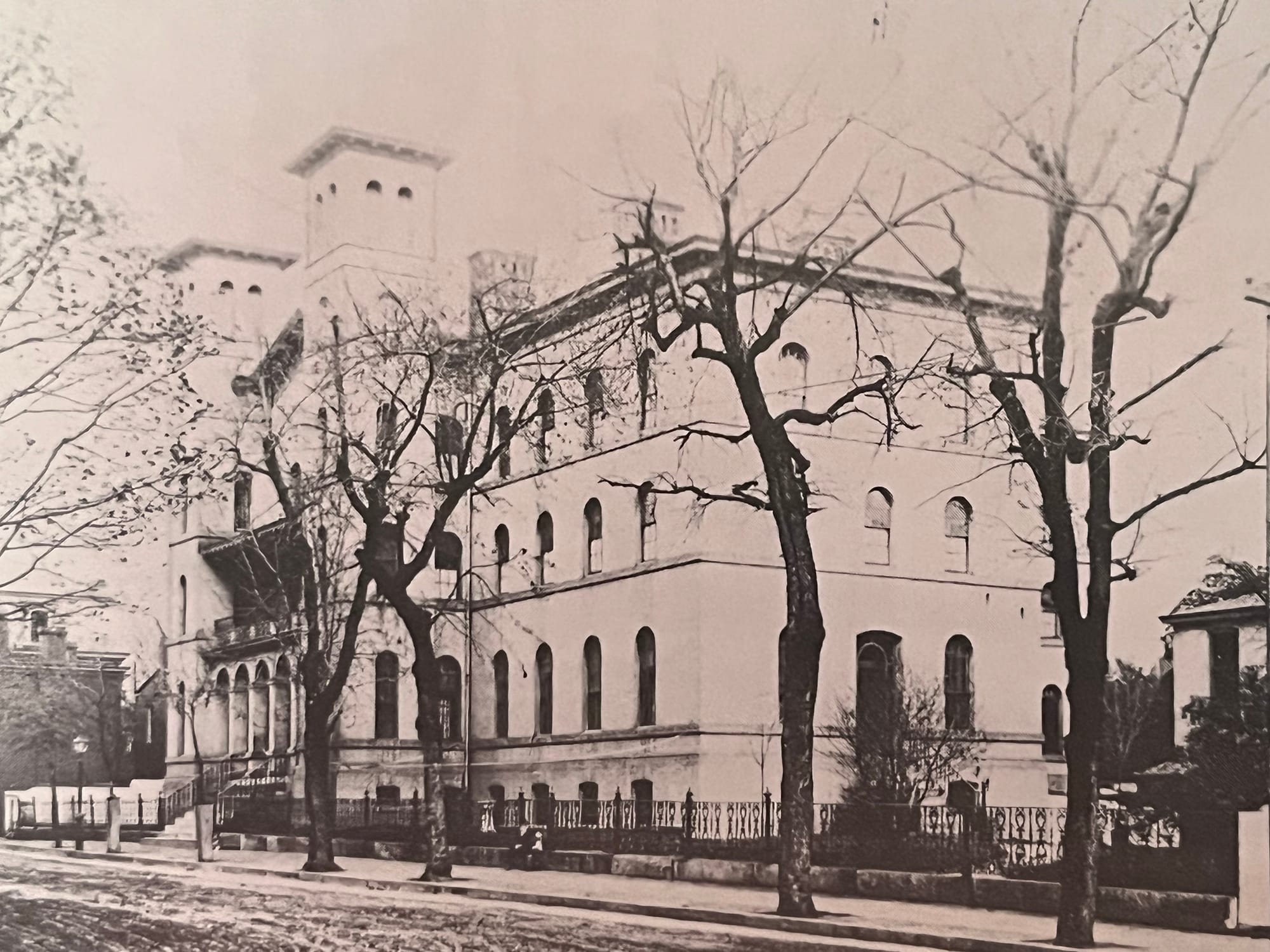
Virtually all of Court End is gone, swallowed up by many decades of growth and development. The John Marshall House at Marshall and 9th, across the street from City Hall, is a notable survivor.
Those who are interested can get a sense of how the neighborhood was laid out by visiting the 1000 block of East Clay, perhaps the most remarkably preserved historic block in all of Richmond. Boasting two rows of beautiful Italianate and Neoclassical house fronts, the block feels like a frozen time capsule, so much that you might expect to see John Marshall himself strolling across its unusually wide sidewalks.
But that’s about it. If Richmonders wish to see any more remnants of old Court End, they’ll have to look a little harder—even, in one case, all the way out to Lancaster County on the state’s Northern Neck.
That’s where Albert W. Pollard—of Pollard & Bagby fame—built a secluded river retreat, “Point of View,” where he incorporated a strikingly unique decorative railing saved from the Davis-Stokes House in Court End.
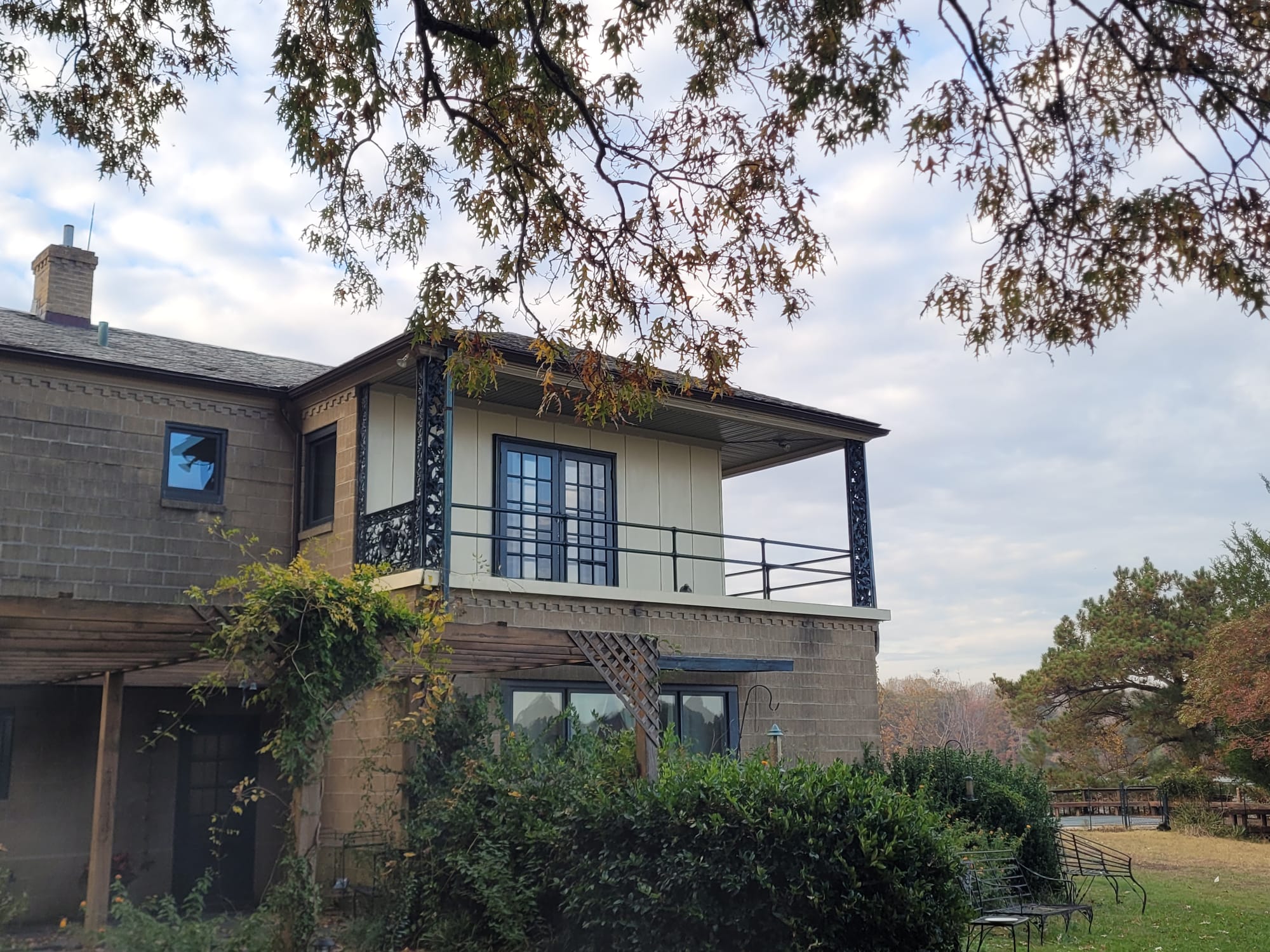
The Davis-Stokes house was built by Richmond slave-trader Solomon Davis and was later occupied by A.Y. Stokes, giving it its hyphenated name. It occupied the site that eventually held the Marshall Street Pavilion and now holds the expanded Children’s Hospital of Richmond.
Mary Scott described the building as “monstrous,” and surviving photographs do depict a rather overlarge, bulky structure, of little architectural note aside from a cornice marked by oddly severe corbels. The most notable feature, Scott pointed out, was the “rich iron balcony” affixed to the eastern facade, which was “adorned with medallions of Thomas Jefferson, Patrick Henry, and Henry Clay,” three of the most revered native Virginians of the day.
The Davis-Stokes house was demolished in 1936, after which Pollard came into ownership of the beguiling iron balcony and had repurposed it for his river estate, which is still owned by extended family. One of the real estate leader’s descendants, Albert Jr., told The Richmonder that his forebear was “a bit of an eccentric.”
“He was known for hosting fabulous parties including the very swanky (at the time) method of cooling the house with fans blowing over blocks of ice that were in the corner of the room,” Pollard said.
Albert Pollard Sr., meanwhile, told the Richmonder that the older Pollard—a cousin of his whom he referred to as an uncle—“likely bought the railing from Redmond Lumber Co,” at its warehouse on Vawter Road.
“I remember going with him to the salvage warehouse to search for things he might want to use in his house,” Pollard Sr. said.
Though the old Court End cast iron has been cut up and repurposed, it has preserved most of its artistic flourishes, including the depictions of Clay, Jefferson and Henry. Also preserved is a snaking iron trellis of carved oak leaves and fat acorns, as well as several rows of iron Sangiovese grapes. Solomon Davis might be miffed to see the balcony cut into new shapes, but he would have no doubt as to its provenance.
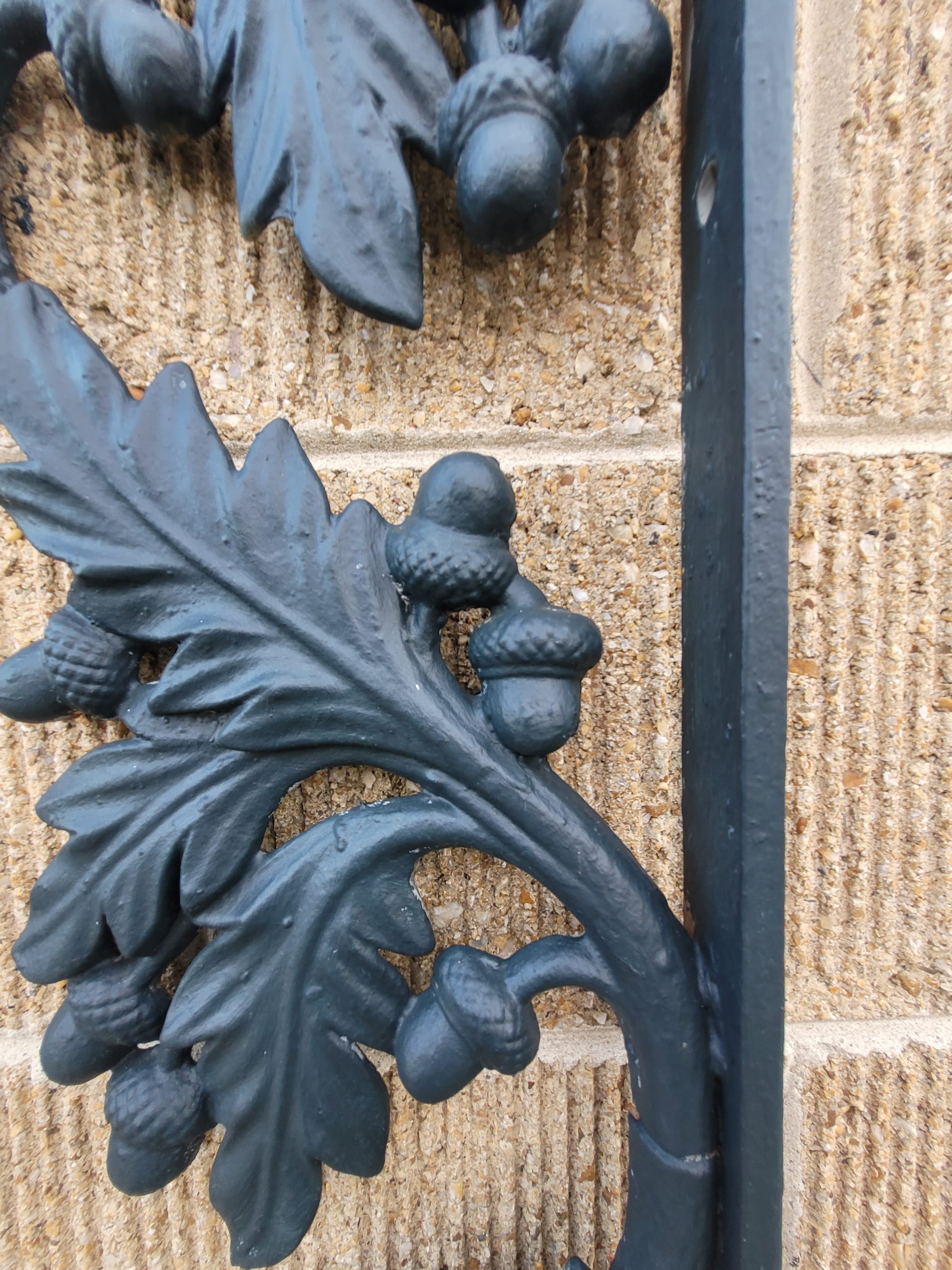
Cities never stop changing; they are famous for plowing under the old, erecting the new, and then plowing under the new for the newer. A time-traveler from 1900 would doubtlessly not recognize Court End today.
But if he saw the iron railings at the far-flung “Point of View,” he could at least grasp at a sense of continuity—an understanding that the past is never very far past, and that the future is always shaped by it, sometimes literally.
Also found on the property on the Northern Neck is a cast iron horse hitching post, the kind you still see occasionally around the city, a testament to a time when horses were still the principal means of transportation for most. Dozens of miles from the city center, it’s a little piece of urban flair in the country.
But did it come from Court End?
“We do not know the origin of the hitching post,” Albert Jr., said. But “I would be surprised if it was not from downtown Richmond.”
